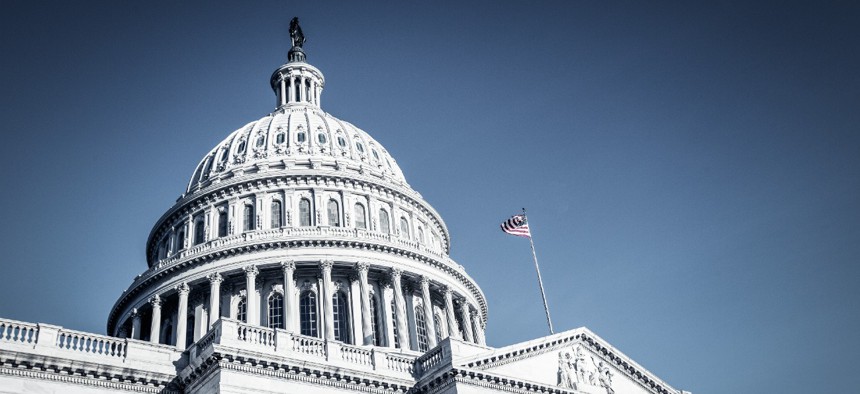
uschools / iStock.com
U.S. to Avoid Default as House Passes Bill to Kick Crisis to December
Congressional leaders have yet to spell out how they will avoid potential delayed paychecks for feds in the long term.
The House on Tuesday passed a short-term measure to raise the nation’s borrowing limit, temporarily avoiding an unprecedented default on U.S. debt that would have caused significant disruption for federal agencies and the economy.
President Biden is now expected to sign the bill to raise the debt ceiling by $480 billion, enough to pay the government’s bills through Dec. 3. That would align the new debt deadline with the expiration of a stopgap spending bill that is currently funding agencies, though the Treasury Department would likely be able to create additional flexibility by taking what it calls “extraordinary measures” to limit its daily expenditures.
Senate Republicans and Democrats struck a deal last week after Minority Leader Mitch McConnell, R-Ky., offered for his party to cease its actions that had prevented Congress from addressing the debt limit. Republicans had insisted Democrats pass a long-term debt measure on their own through a process called reconciliation, which would allow the majority party to approve the bill on its own with only 51 votes. While Senate Democrats accepted McConnell’s offer and approved the two-month debt limit extension last week, they have maintained they will not use reconciliation to address the next deadline.
Lawmakers have expressed optimism they can agree to full-year appropriations bills when the current continuing resolution expires, but no such confidence exists for the next debt deadline. Both parties have said they will stick to the same demands that caused a standoff in recent weeks, paving the way for the same contours to shape the debate in December.
McConnell said the agreement would avoid the “manufactured crisis” that would result from default. He added it would give Democrats more time to raise or suspend the debt ceiling through his preferred method of reconciliation. Treasury had estimated that absent congressional action, the government would likely have defaulted on Oct. 18.
Senate Majority Leader Chuck Schumer, D-N.Y., and Democratic leadership have yet to spell out their plan for circumventing Republican intransigence come December, saying only that the minority party has a responsibility to help them avoid default.
There is no blueprint for how the government would operate if it breaches its debt ceiling, though it is clear agencies would not be able to carry out their normal operations. Because typical spending outpaces the revenue the Treasury Department brings in on a given day, the federal government would only be able to pay 60% of its bills in a given month of a default scenario, according to a Bipartisan Policy Center estimate.
Analysts and Treasury officials have sketched out two possible outcomes during a default: the government would either delay payments until it collected enough revenue to cover them, or prioritize some payments while allowing others to go unpaid. In either scenario, agency payments to beneficiaries, states, grantees, contractors and, potentially, their own employees, could be disrupted. Some federal workers could be furloughed or tasked with working on the promise of back pay in the future.







